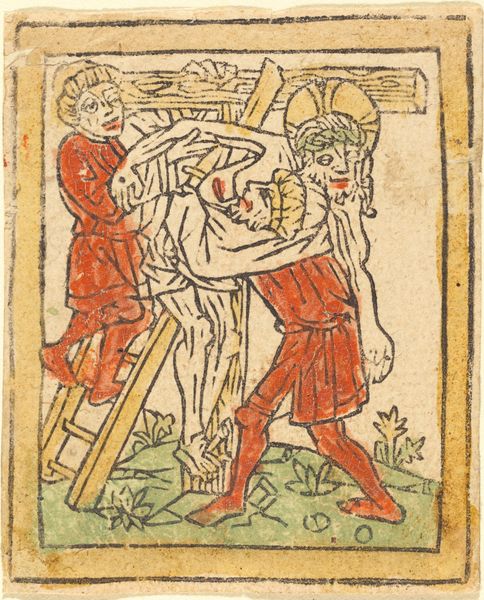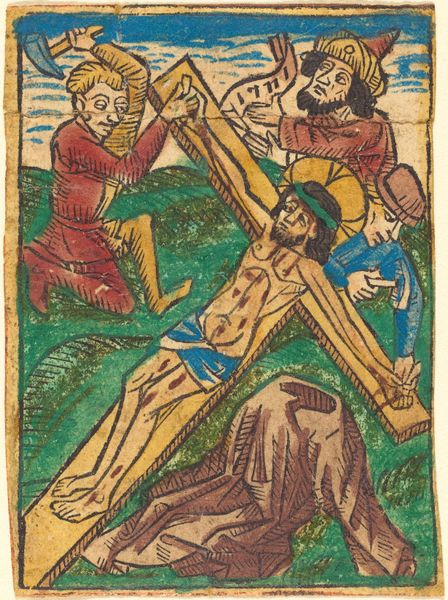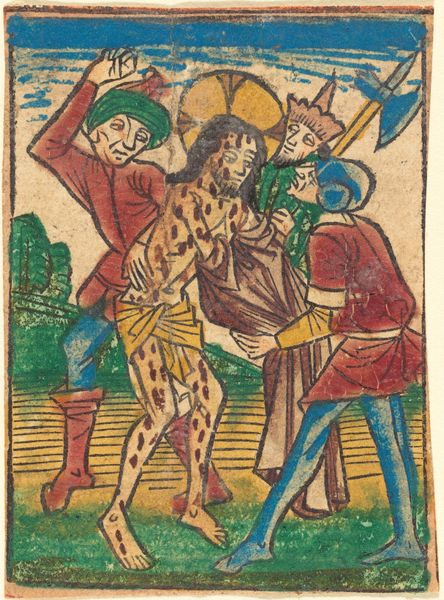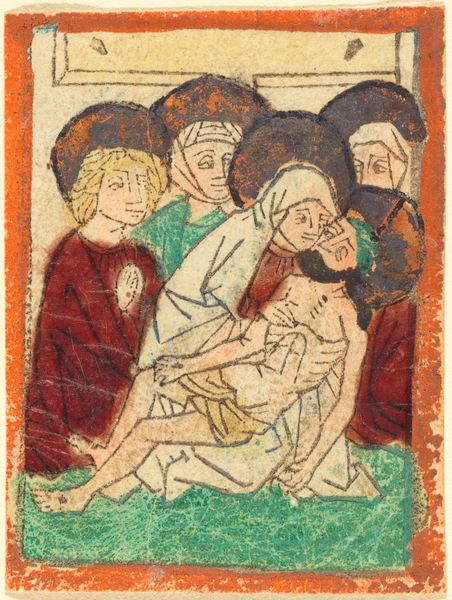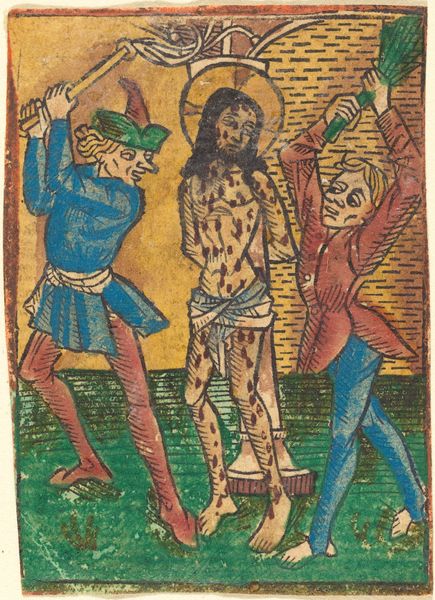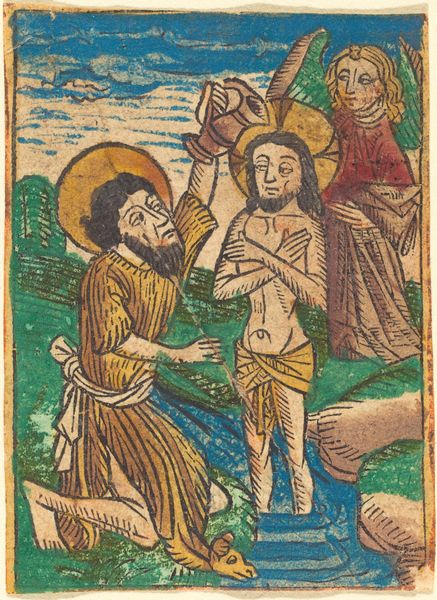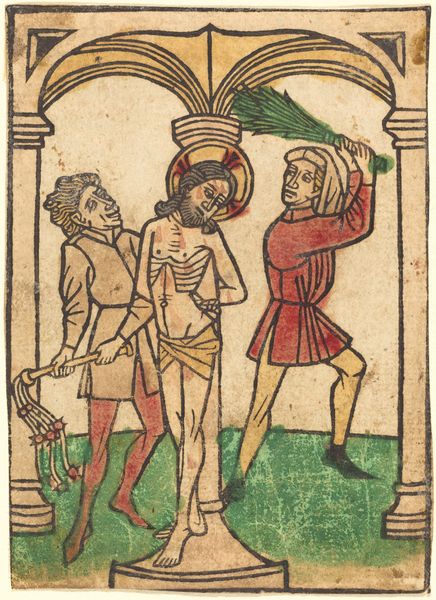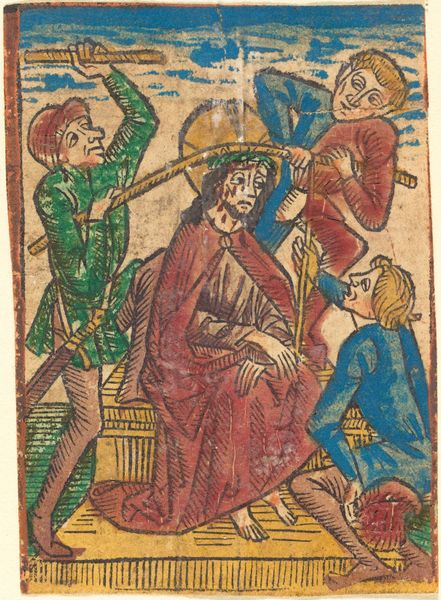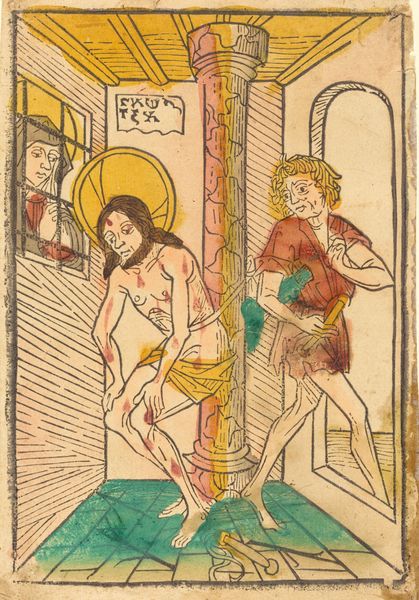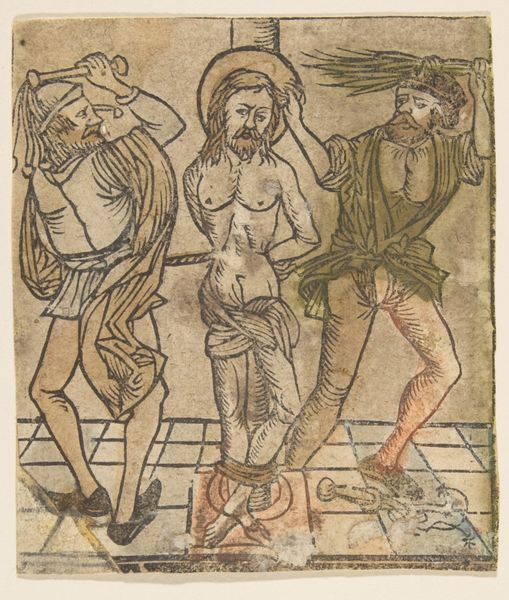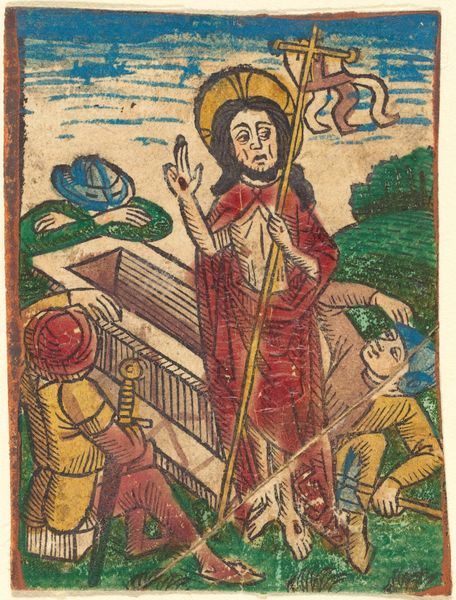
drawing, print, ink
#
drawing
#
medieval
#
narrative-art
# print
#
figuration
#
ink
#
coloured pencil
Dimensions: overall: 9.4 x 7.9 cm (3 11/16 x 3 1/8 in.)
Copyright: National Gallery of Art: CC0 1.0
Curator: The print you're viewing is titled "Christ Stripped of His Garment," and it comes to us from Ludwig of Ulm. Notice how the medium—ink on paper, possibly even hand-colored—affects the visual weight of the image. Editor: It's a brutal scene, even with this simplified style. There’s such vulnerability in Christ's nakedness as he’s being divested. The social hierarchy is palpable, too. Curator: I'm interested in the paper itself. The marks, perhaps deliberately left, remind us that it is the end product of wood and textile industries—processed labor made visible through chain lines and watermarks. Editor: Right, and this scene is so rife with layers of power, shame, and resistance. It speaks to themes of injustice and the stripping away of dignity. You can almost feel the artist’s, and maybe Ulm's audience, conflicted empathy. The religious undertones cannot be ignored. Curator: Consider also the production and consumption of prints during this period, how affordable religious images were shaping beliefs across social classes. Editor: The image definitely evokes empathy for those unjustly accused and marginalized. It's hard not to think of how such visuals fueled piety and also became instruments for social commentary during turbulent times. The contrast between Christ and his tormentors could suggest broader resistance themes of those with agency and those that have been targeted. Curator: So you're arguing that it could be an act of resistance rooted in a medieval class struggle? Editor: Perhaps "class struggle" is too simplistic, but absolutely, this work speaks to deeper power imbalances that question authority and reflect identity politics in relation to divine morality. It begs questions of why artists take on sensitive sociopolitical commentary. Curator: Thinking about the labor involved in creating such a work, from the papermaking to the delicate inking, it reframes religious devotion as a highly material undertaking. It goes beyond mere spirituality. Editor: Exactly, but to separate that materiality from the powerful social statement seems a little too dry. Both intertwine; it can't exist without both! I feel the artist intended this. Curator: It's a complex image viewed across the span of time. Editor: Agreed!
Comments
No comments
Be the first to comment and join the conversation on the ultimate creative platform.
